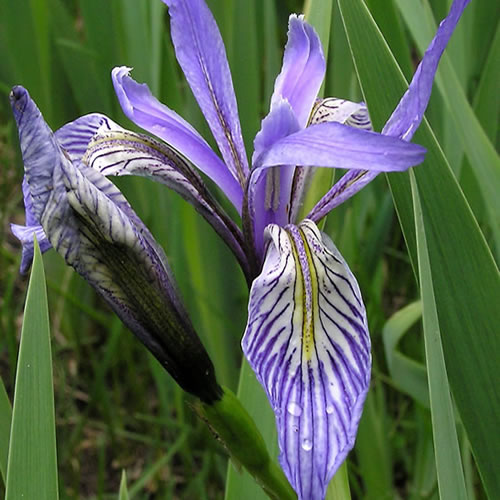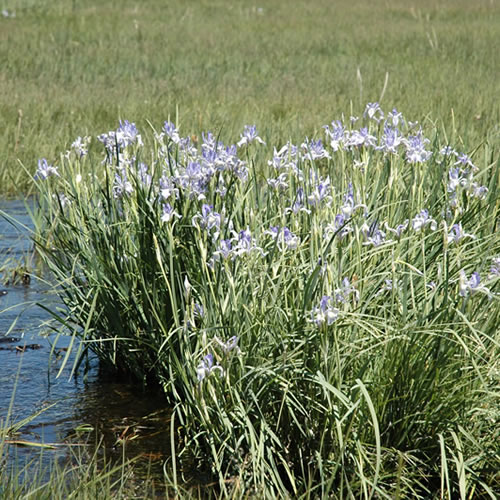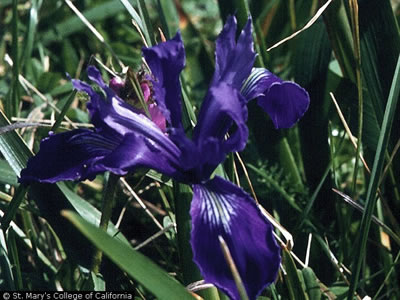Our Native Irises: Blue Flag Irises
Iris missouriensis: Western Blue Flag Iris
The western blue flag iris occurs from British Columbia and Montana south to California and New Mexico.
Iris missouriensis has a light blue to deep violet rarely white flower. The spreading sepals are deeply veined dark purple with a yellow-white signal. The petals are upright to slightly divergent. The western blue flag iris flowers in late spring, on a (one) two to three flowered inflorescences, with stiff light green leaves up to two to three feet long that are whitish colored at the base. The leaves arise from shallowly rooted, large, branching rhizomes forming clumps.
Iris missouriensis is commonly found growing in wet meadows, seeps, dry steppes, and open woodland. It is the most drought-tolerant of our native irises only needing moisture in the spring.
 In this picture, note the prominent nectar guides of Iris missouriensis for a pollinator to follow. Photo by Al Schneider, Southwest Colorado Wildflowers, USDA PLANTS Database.
In this picture, note the prominent nectar guides of Iris missouriensis for a pollinator to follow. Photo by Al Schneider, Southwest Colorado Wildflowers, USDA PLANTS Database.
 Iris missouriensis in a typical habitat. The color of the flower of this species varies from light purple and white to deep violet. The flowers tower high up in this habitat, readily visible to potential pollinators. Photo by Carol Wilson, The Genus Iris.
Iris missouriensis in a typical habitat. The color of the flower of this species varies from light purple and white to deep violet. The flowers tower high up in this habitat, readily visible to potential pollinators. Photo by Carol Wilson, The Genus Iris.



